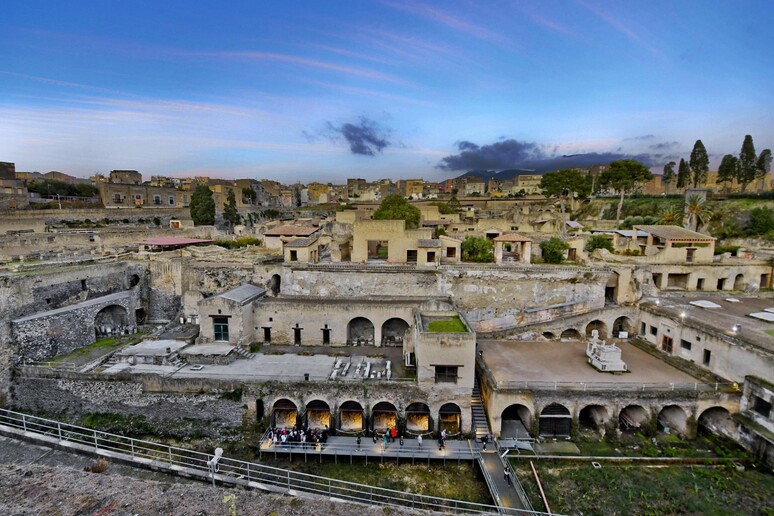Anthropologist Pier Paolo
Petrone is the lead author of a study published in The New
England Journal of Medicine that revealed vitrified brain tissue
found in the skull of the caretaker of the College of Augustales
following the eruption of Vesuvius in 79 AD.
The completely carbonized body was wrapped in a sponge-like
solid substance and discovered lying face-down in bed,
suggesting that perhaps the caretaker was sleeping when the
eruption occurred.
The study, conducted together with Professor Piero Pucci of
the Genetic-Advanced Biotechnologies Centre (Ceinge) in Naples,
Professor Massimo Niola of the University of Naples Federico II,
and researchers from Cambridge University, took place thanks to
a decade-long collaboration with the Herculaneum Archaeological
Park and its director Francesco Sirano.
The study examined in detail the caretaker's remains, which
were first discovered in the 1960s in a small room in the
College of the Augustales in ancient Herculaneum.
Petrone conducted the research in his Human Osteobiology and
Forensic Anthropology laboratory in the Advanced Biomedical
Sciences Department of the University of Naples Federico II.
"Over the years, parts of the skull had been removed, and by
removing the volcanic ash, I was able to observe the inside of
the cranium," Petrone said.
"I saw black, glassy fragments that sparkled. After taking a
fragment and closely observing it, I thought it had to be the
vitrified remains of the brain, also because there was no trace
of it in the body, nor on the site," he said.
After this initial observation, Petrone teamed with Pucci to
analyse the fragment in the laboratory at Ceinge to prove his
theory.
After these analyses as well as further proof requested by
the medical journal, Petrone discovered the fragment had "seven
enzymes highly represented in all human brain tissue, such as
amigdala, hypothalamus, frontal cortex, etcetera".
"Vitrification is an effect of exposure to a high temperature
followed by a rapid cooling," Petrone said.
"It's the first time ever that the vitrified remains of brain
tissue have been found, not only in an archaeological context,
but also in a forensic context. The process of vitrification, as
we demonstrated with our analyses, even after 2,000 years can
leave biological traces intact that otherwise would not have
been preserved," he said.
"The analyses that we carried out at Roma Tre University with
Professor Guido Giordano and his team established a temperature
from wood found in the College of between 480 and 520 degrees
Celsius," Petrone said.
ALL RIGHTS RESERVED © Copyright ANSA











